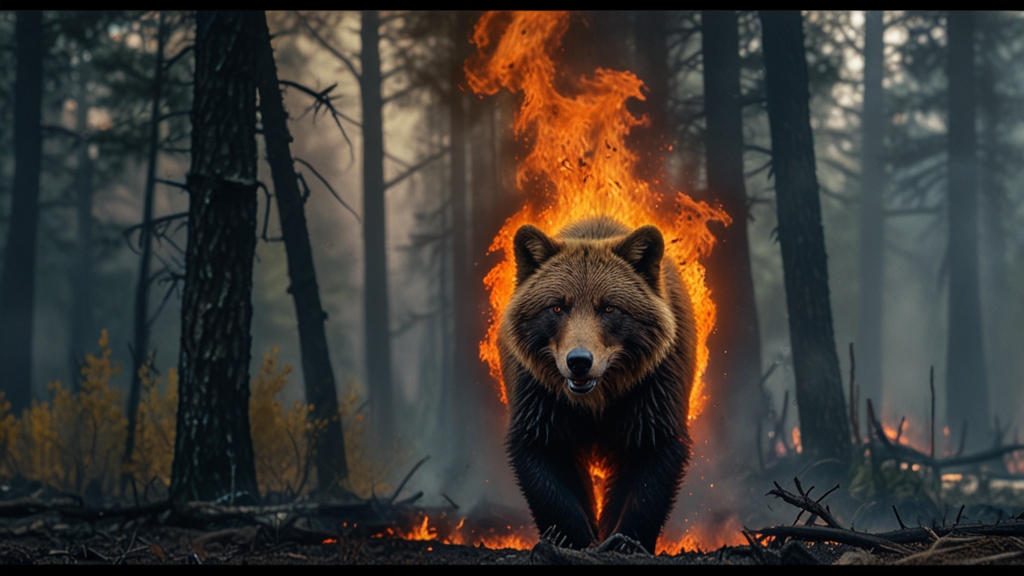The Fight for Flames: Combating Wildfires to Save Wildlife
Wildfires are a growing menace to wildlife across the globe, fueled by changing climate conditions, human negligence, and natural causes. These uncontrollable blazes affect millions of acres of land each year, wreaking havoc on diverse ecosystems and jeopardizing countless species. With the increasing frequency and intensity of wildfires, the urgency to combat them and protect wildlife has never been more critical. This article explores the multifaceted approaches in the fight against wildfires and the efforts made to preserve our precious wildlife.
The Impact of Wildfires on Wildlife
Wildfires can devastate animal populations and their habitats. Rapidly spreading flames and intense heat often leave wildlife with little time to escape, resulting in high mortality rates. Species that manage to survive face loss of food sources, shelter, and breeding grounds. Furthermore, the aftermath of wildfires can lead to long-lasting ecological imbalances, making it difficult for wildlife populations to recover.
"The immediate impact on wildlife can be catastrophic. Flames consume their homes, and the smoke can be deadly. Long-term habitat destruction alters the landscape in ways that can take decades to heal," says Dr. Jane Goodall, renowned primatologist and conservationist.
Strategies to Combat Wildfires
Effective wildfire management involves a combination of prevention, preparedness, and active firefighting strategies. Here are some key methods:
Prevention
Preventing wildfires is the first line of defense. Public awareness campaigns educate people about fire safety, and regulations on activities like campfires, smoking, and debris burning help reduce human-caused ignitions. Land management practices such as controlled burns and vegetation management can also mitigate potential fire hazards.
Preparedness
Communities and wildlife conservation areas develop comprehensive wildfire response plans. These plans include early warning systems, evacuation routes, and shelters. Training and equipping wildfire response teams with advanced technology and resources ensures a swift and effective response when wildfires occur.
Firefighting
When wildfires do ignite, coordinated firefighting efforts are crucial. Ground crews, aerial support, and specialized equipment work together to contain and extinguish fires. Cutting firebreaks, dropping fire retardants, and creating defensible spaces around critical habitats are some of the tactics used to protect wildlife areas.
"Combating wildfires requires a concerted effort from local communities, government agencies, and conservationists. It's about being proactive and having a well-coordinated response strategy," emphasizes Chief John Smith, a veteran firefighter with over 20 years of experience.
Rehabilitation and Recovery
Post-fire recovery is essential for restoring habitats and supporting wildlife populations. Efforts include reforestation, soil stabilization, and water quality restoration. Wildlife rescue and rehabilitation centers provide critical care for injured animals, while monitoring programs track the recovery of ecosystems and species.
In the wake of a wildfire, rebuilding an ecosystem is a challenging but necessary task. The collaboration between ecologists, wildlife biologists, and local volunteers plays a pivotal role in rehabilitating affected areas. Through sustained conservation efforts, ecosystems can gradually recover, offering wildlife a chance to thrive once again.
Innovative Solutions and Future Prospects
Emerging technologies and innovative approaches are enhancing wildfire management. Advanced satellite imagery, drone surveillance, and AI-driven predictive models improve wildfire detection and monitoring. These tools enable quicker, data-driven decision-making, potentially reducing the scale and impact of wildfires.
Additionally, fostering international cooperation is critical, as wildfires do not recognize borders. Sharing knowledge, resources, and best practices can create a more resilient and unified front against these destructive natural disasters.
"Innovation in wildfire management is transforming our approach to conservation. By integrating technology and fostering global collaboration, we can better protect our natural heritage for future generations," states Dr. Emily Watson, an environmental scientist and technology advocate.
Conclusion
The fight against wildfires is a complex and ongoing battle that demands vigilance, collaboration, and innovation. Saving wildlife amidst these fiery threats requires a multifaceted approach encompassing prevention, preparedness, active firefighting, and robust recovery efforts. As we continue to develop and implement advanced strategies, our commitment to preserving wildlife and their habitats remains steadfast. Protecting our planet's biodiversity not only benefits the ecosystems but also ensures a healthier environment for all living beings. Together, we can mitigate the devastating impact of wildfires and safeguard the delicate balance of our natural world.










